While many horses are capable of growing lengthy manes and tails, there are some breeds that are particularly well-known for long majestic hair. A horse’s mane and tail can offer protection from the elements, as well as add to the charm of his appearance.
Owners can spend hours grooming, braiding, or otherwise manipulating their horse’s hair to keep him looking his best – especially for a breed known for its long luxurious locks.
Here are 11 horse breeds that are well-known for their long manes and tails. The list might surprise you!
Table of Contents
Gypsy Vanner
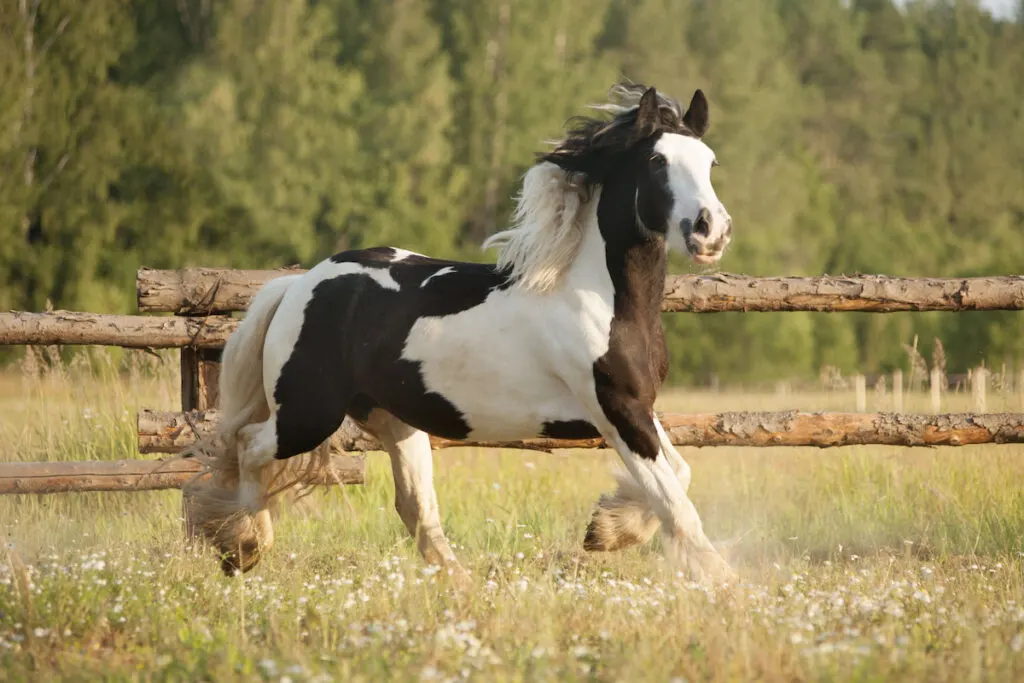
These colorful horses are recognized for their flashy coats, graceful gaits, and you guessed it – impressive manes and tails.
The mysterious Gypsy Vanner (commonly known as Gypsy horse or Irish Cob) comes from the British Isles. They were originally bred to pull the caravans for the Romani people as they traveled across the countryside.
In America, the Gypsy Vanner is a stunning breed that excels in many disciplines due to their elegant good looks and gentle dispositions.
The long hair and heavy feathering of a Gypsy Vanner comes from the influx of draft horse breeding in their pedigrees, although they are smaller than a typical draft horse.
For many breed shows, horses must be shown with a full and fluffy mane and tail. Some Gypsy Vanners have extraordinary hair growth – it can take hours to wash, dry, and comb out the hair of these stunning horses. (source)
Friesian
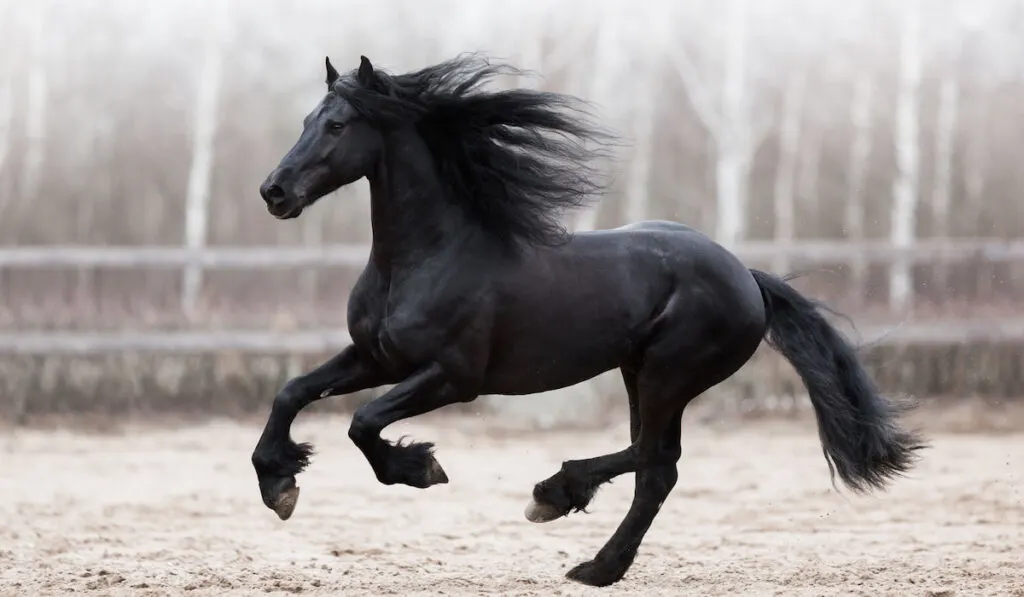
These black beauties look like medieval warhorses ready to carry knights into battle– with flowing manes and tails to highlight their proud appearance.
The Friesian horse developed in the Netherlands, where it was originally bred to be heavy enough to carry a fully-dressed knight, but light enough to be agile and elegant.
Hundreds of years of breeding various draft and riding horses resulted in the long mane, tail, and fluffy feathering on the Friesian that we see today.
Breeding standards are strict for Friesian horses, and good example of breed type includes an “abundance of hair in the form of mane, tail, and feathers.” Their hair is thick and wavy, and must be regularly maintained in order to keep it in good condition. (source)
Pure Spanish Horses (Andalusian and Lusitano)
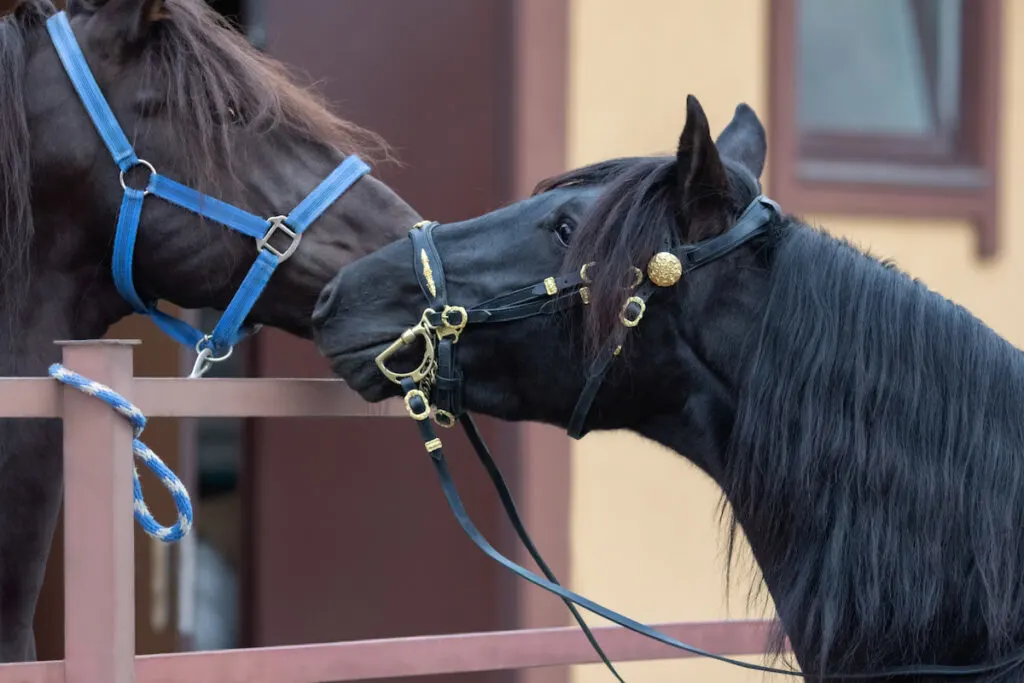
Imported from Spain in the 16th century, Iberian (pura raza Española or P.R.E) horses are known for their traditional good looks, elegant movements, and flowing manes and tails.
Their hair is wavy and thick, and is often intricately braided at shows, depending on the chosen discipline. The breed standard includes “abundant, long, and often wavy hair.” (source)
The influx of Spanish horses to the Americas and other countries across the globe resulted in many breeds with the genes for luxurious locks.
This is why you may see wild Mustangs with thick, wavy hair – especially if they come from populations with known Spanish horse influence.
Miniature Horse
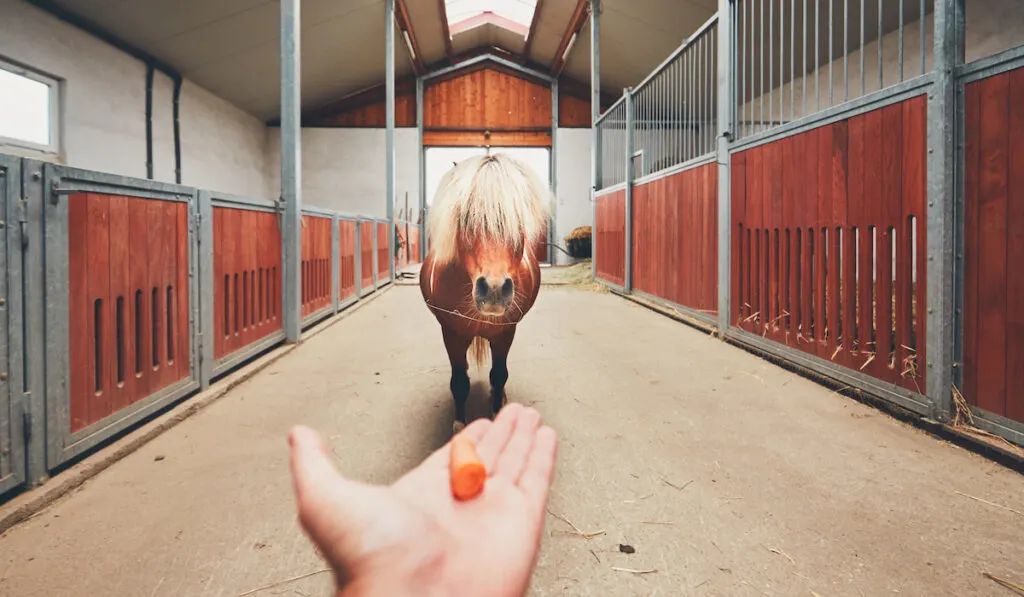
Ponies often have longer manes and tails than full-sized horses, but miniature horses are built to resemble miniature versions of their taller counterparts.
These pint-sized horses get their shaggy locks from their Shetland and Welsh pony ancestry, which can often boast manes and tales with impressive volume.
Many miniatures have classic fluffy manes and tails, which owners often choose to leave long and flowing. The hair on a mini can rival that of many taller breeds, despite their small size.
Icelandic Horse
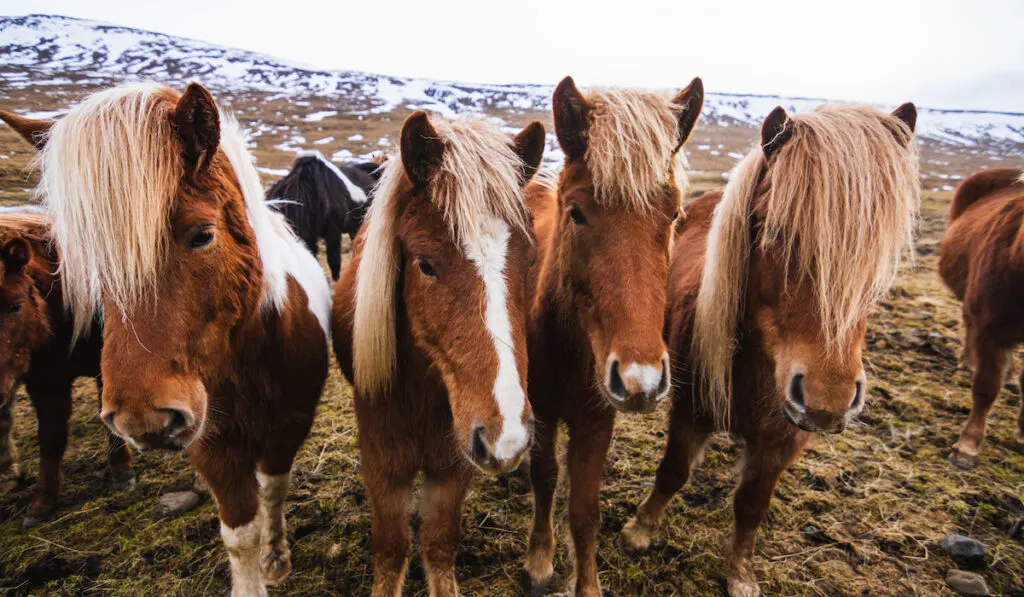
Icelandic horses are compact, hardy, and their manes and tails float behind them as they perform their characteristic tölt and flying pace.
Hundreds of years of selective breeding has resulted in manes and tails that are “full, with coarse hair,” and they also sport a thick seasonal double coat. (source)
A horse’s mane can keep him cozy during the harsh winter, and a long tail can swat the flies during a sweaty summer. The average temperature in an Icelandic winter is around 14 – 32 degrees Fahrenheit, but can sometimes dip below -22 – no wonder the Icelandic horse maintains such an impressive mane!
Haflinger
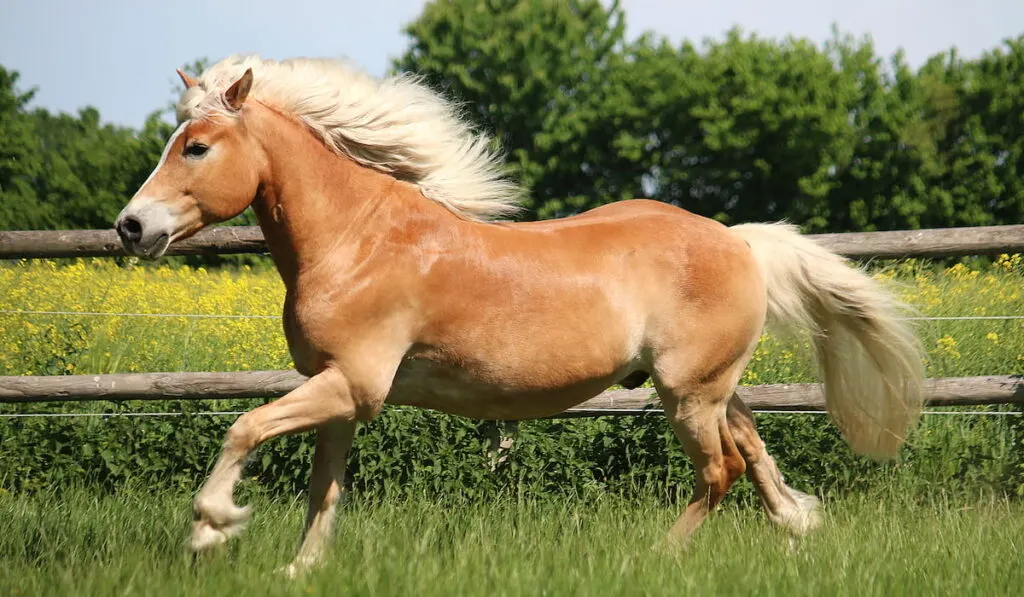
Like the Icelandic horse, the Haflinger’s thick mane keeps him warm during the harsh winters of the Austrian Alps. These hardworking little horses are always a shade of chestnut, with a signature cream colored or flaxen fluffy mane and tail.
One of the most important traits for a purebred Haflinger is that he is personable and gentle. They were originally kept as important members of the family, living under the warn farmhouse to endure the bitter cold.
Hafflingers are small enough for children to handle, and are considered a good family horse. A Haflinger with long hair must tolerate the long grooming sessions needed to keep him looking his best.
American Saddlebred
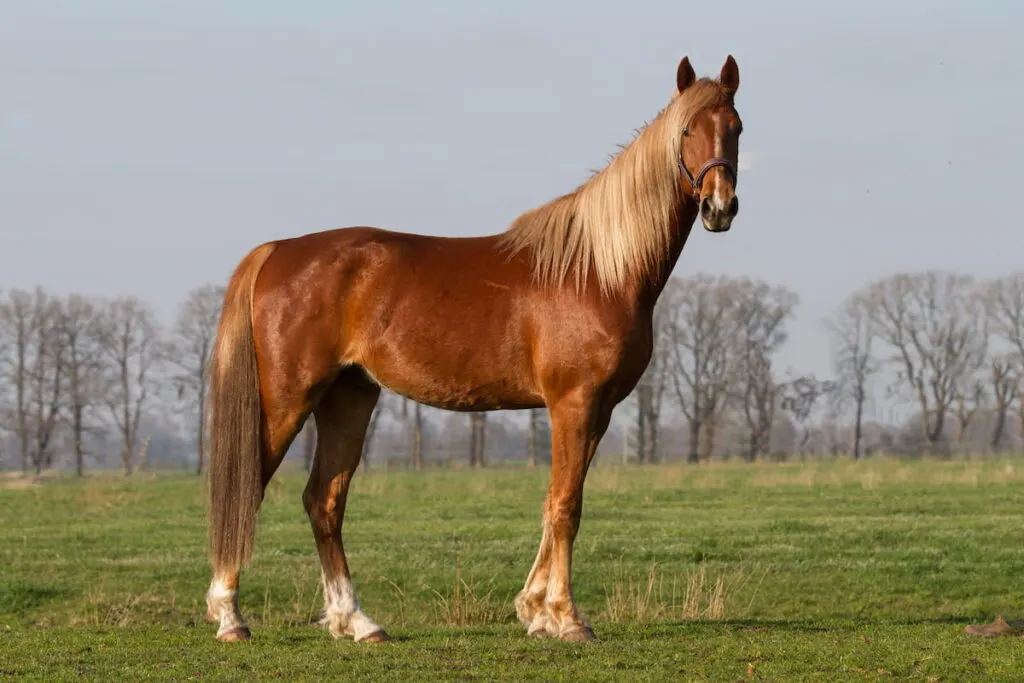
The American Saddlebred is known for its high-stepping trot, energetic movement, and often – its exceptionally long tail.
A Saddlebred has an upright tail carriage, and he will carry his tail like a banner behind him when he moves. A long tail will show off the spirited movement of trotting breeds like the American Saddlebred, Morgan, Arabian, and other flashy movers.
At Saddlebred horse shows, riders in the park or 5-gaited classes will often add a tail extension or “tail switch” to their horse’s natural tails. (source)
These fake tail extensions are made of real horsehair, and are customized to match the horse’s natural tail color. Many other breeds may utilize tail switches, but dramatically long tails are usually unnecessary for the average show class.
Morgan
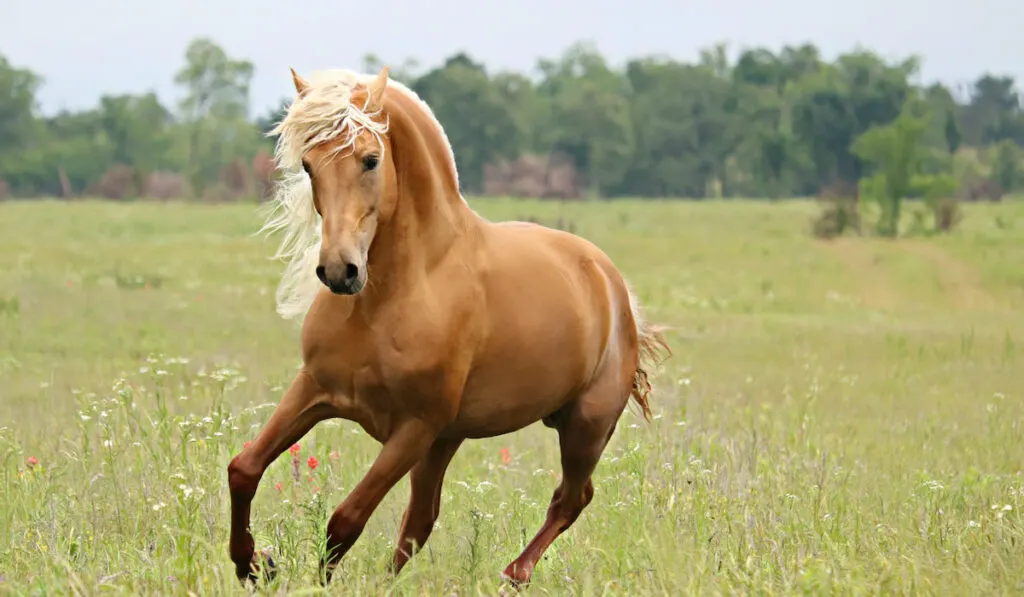
These versatile horses are compact, strong, and have elegant movement. Like the American Saddlebred, a Show Morgan often competes with a long flowing mane and tail.
Morgan horses proudly carry their high-set tails in the same banner-like way, and may also have a tail switch added for fullness.
Even if a Morgan isn’t being shown, he may still grow an impressive mane and tail. He may have a full mane, which accentuates his proud neck and refined head.
Shire
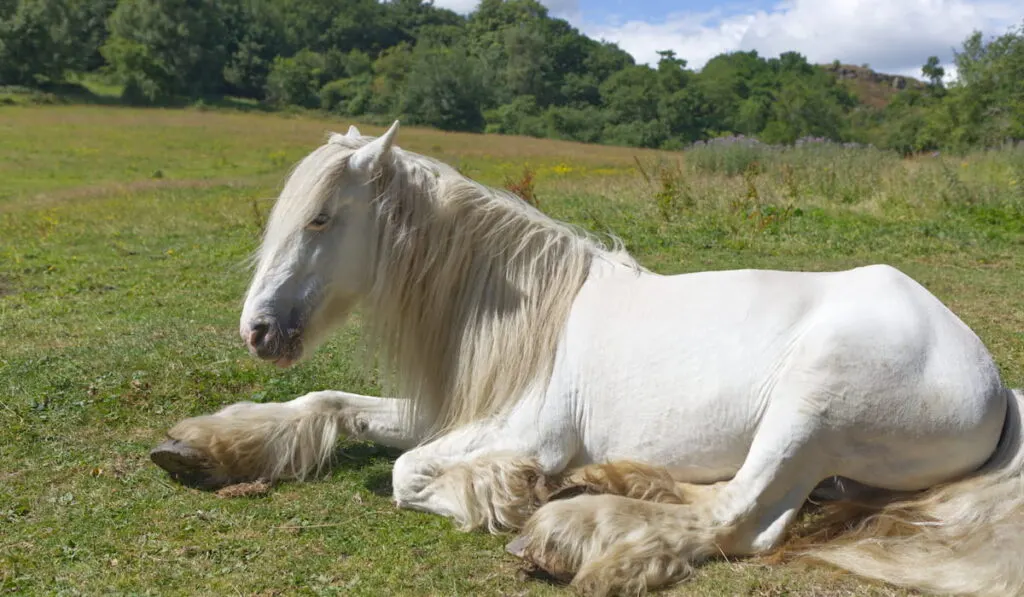
The tall Shire horse was bred for heavy agricultural work, transporting goods, and pulling barges. Like most heavy draft horses, they have thick feathering on the feet and legs, which can protect them from the elements.
The Shire horse may also have an impressive mane and tail to match his impressive height and work ethic.
Many draft horses will have short “bobbed” tails and braided manes, so that they stay out of the way and aren’t tangled in equipment. This is also true for the Shire, although it may grow a long mane and tail if allowed.
Paso Fino
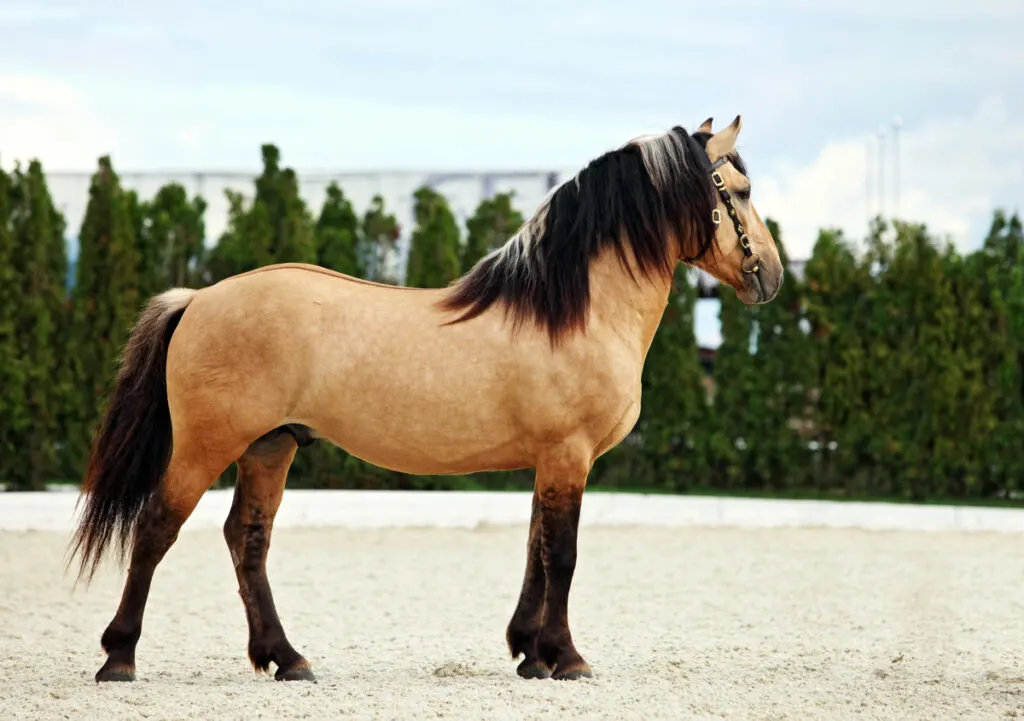
Paso Fino is an elegant gaited horse from Latin America that often sports the same luxurious mane and tail of its Spanish ancestors.
Like their Andalusian and Lusitano cousins, the Paso Fino is often shown with a thick and full mane and tail, which highlights its unusual movements.
These unique horses can perform several gaits outside of the standard walk/trot/canter, including the paso fino, paso corto, and paso largo. (source)
The breed standard is for the hair to be “long, full, and as luxurious as nature can provide.” In the show ring, the horse’s hair is often left long and full, rather than braided or clipped. (source)
Arabian
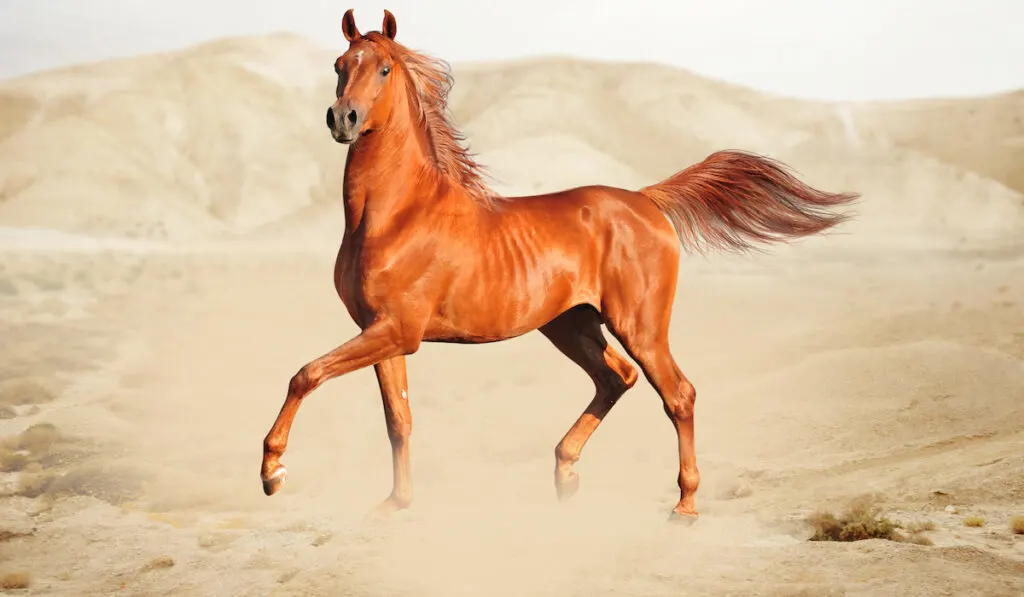
One of the oldest and most elegant breeds, the Arabian horse has a well-arched neck and high-set tail that are often accented by an abundance of flowing hair.
A spirited Arabian proudly carries his tail like a banner, and his mane may float behind him as he gallops around his pasture.
A longer mane can offer some protection from summer flies, so many Arabian owners choose to leave it long. Depending on the horse’s ancestry, their manes and tails may be wavy or straight, but a long mane and tail requires upkeep to maintain a good condition.
Arabians showing in saddleseat or in-hand classes often have their tails left long and flowing to accentuate their flashy movements.
Resources
https://ghra.us/show-rules/

